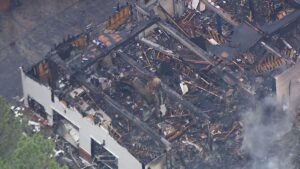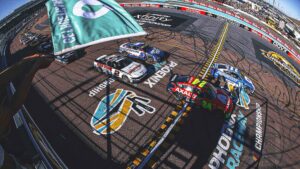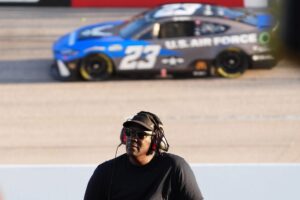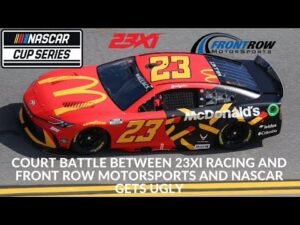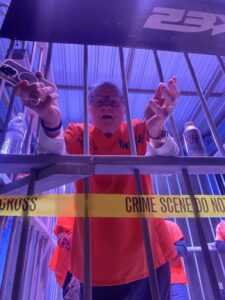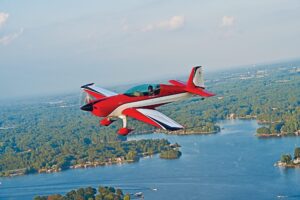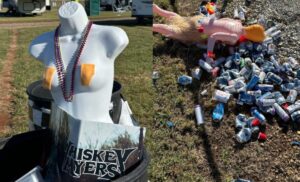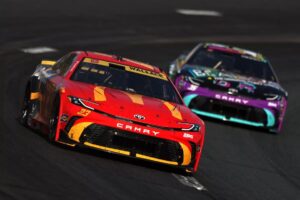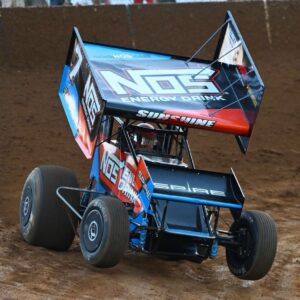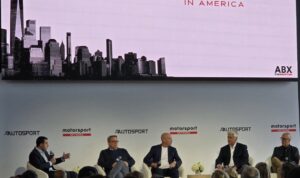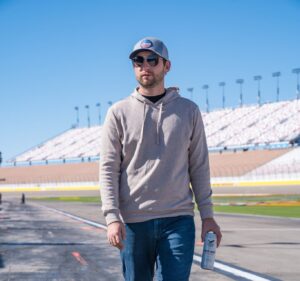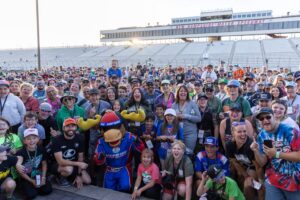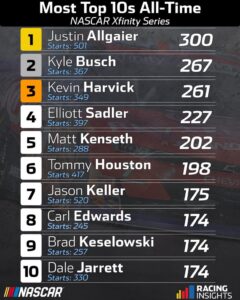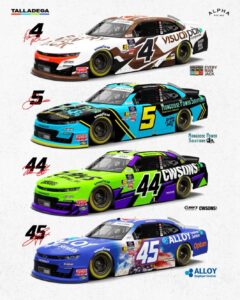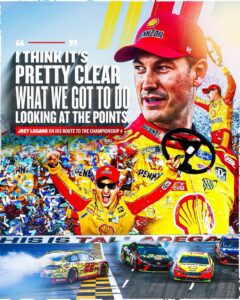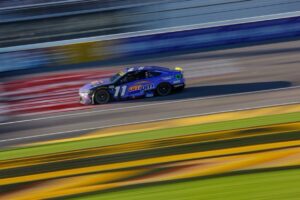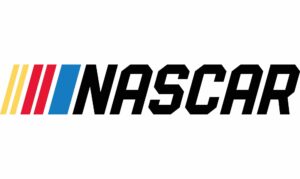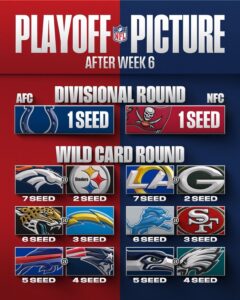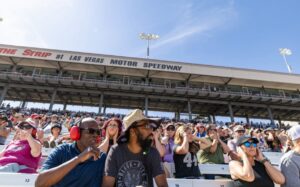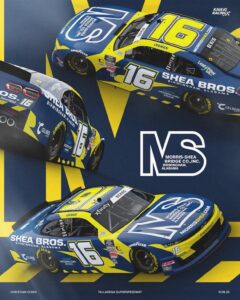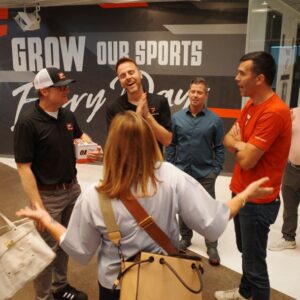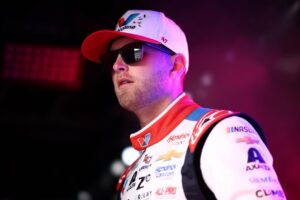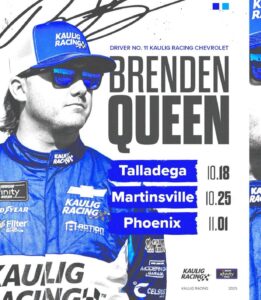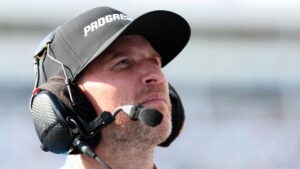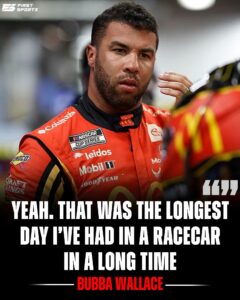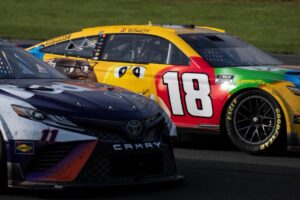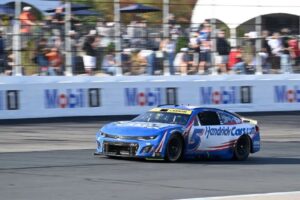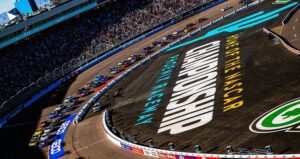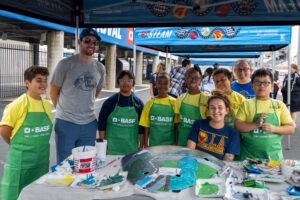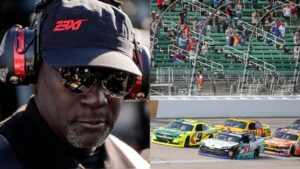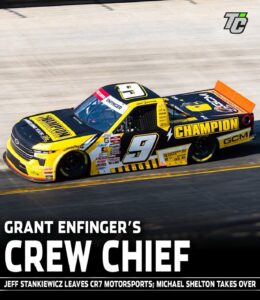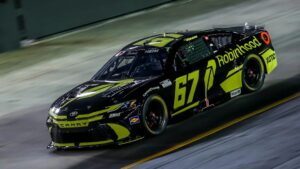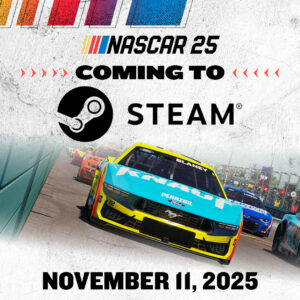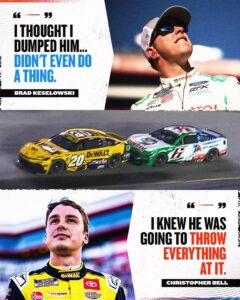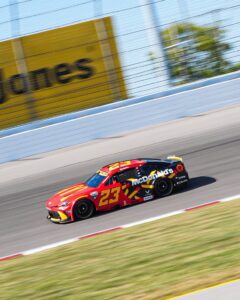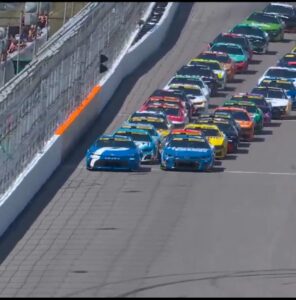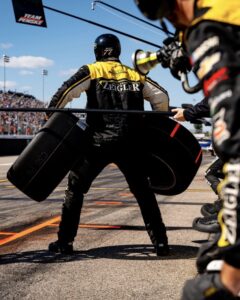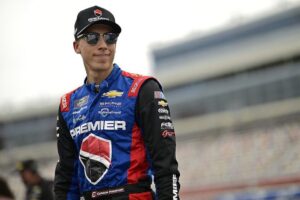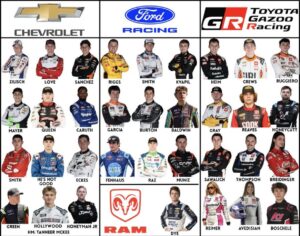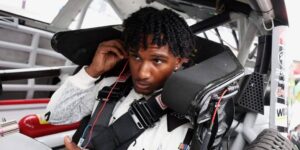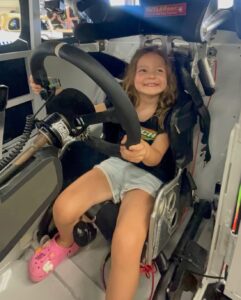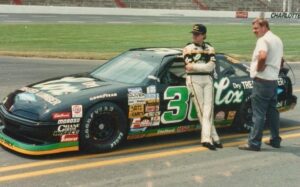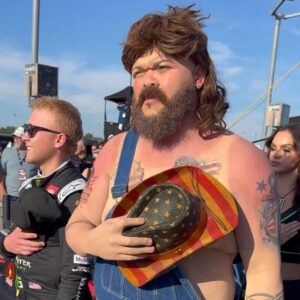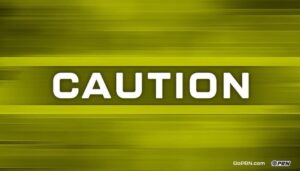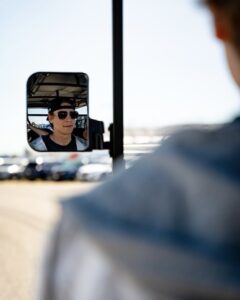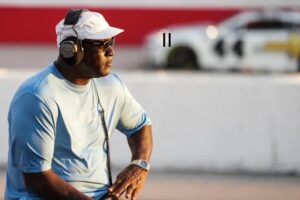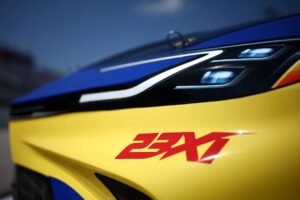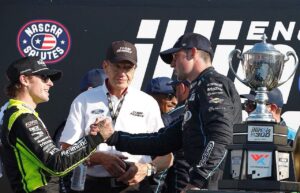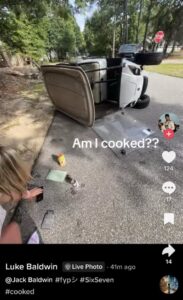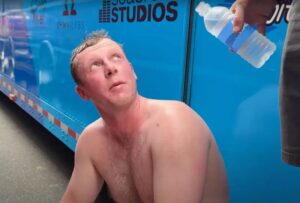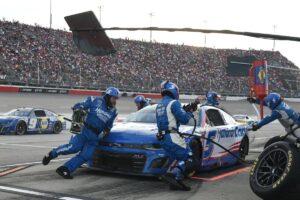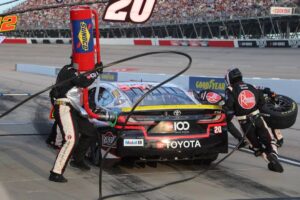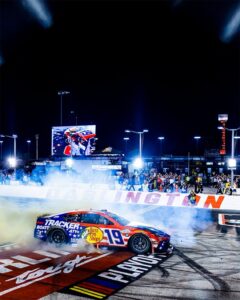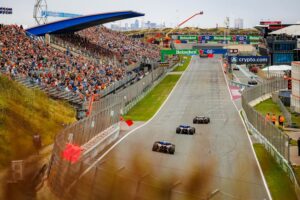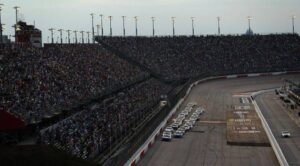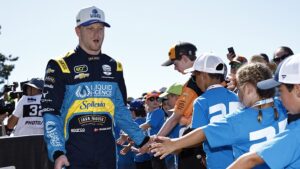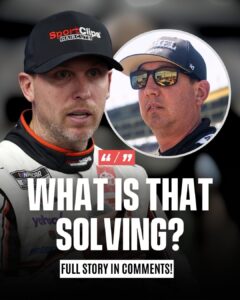Laguna Seca, July 26 — As weather conditions continue to affect proceedings at WeatherTech Raceway Laguna Seca, the spotlight has shifted to one of the most important – and often overlooked – components of a race car in wet conditions: the rain tire.
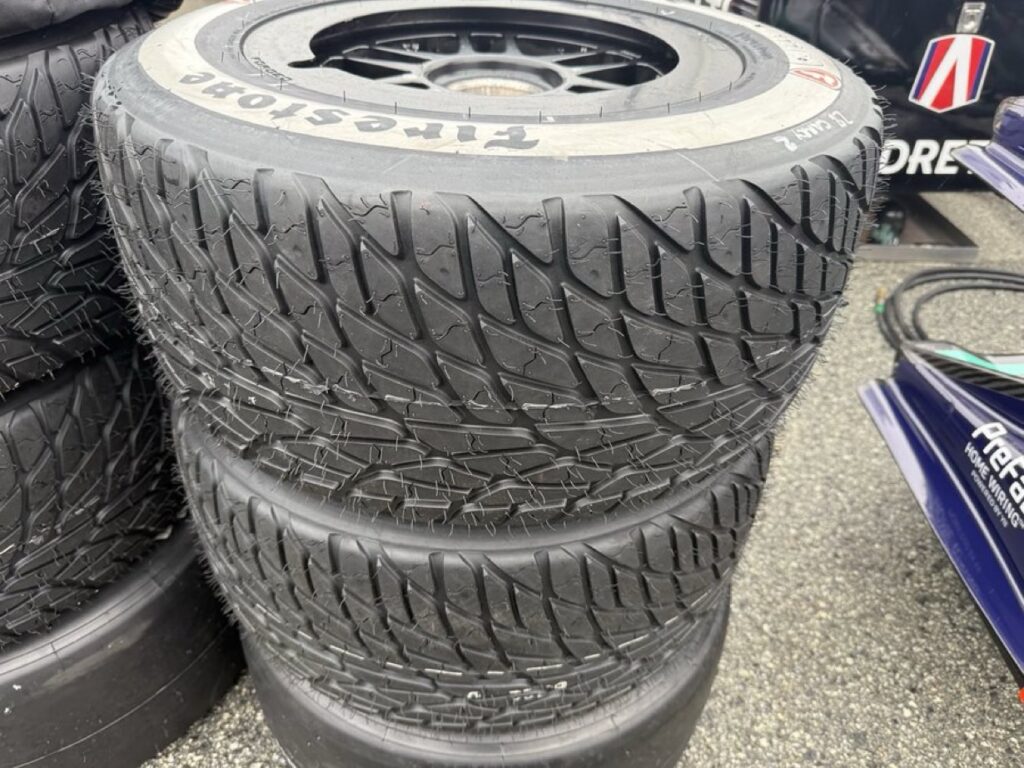
Currently, action remains on hold at Laguna Seca due to the grounding of the medical helicopter, a safety requirement for any green-flag running in INDYCAR. With the wet weather lingering over the iconic Californian circuit, teams and fans alike have taken a closer look at the tools drivers rely on when the track turns treacherous — specifically, Firestone’s rain tires.
A Purpose-Built Design for the Elements
Unlike the familiar slick tires used in dry conditions, rain tires are built with deep grooves and a unique compound to maximize grip on wet surfaces. The tread pattern is engineered to channel standing water away from the contact patch, significantly reducing the risk of hydroplaning — a dangerous condition where the tire loses contact with the track surface due to water buildup.
INDYCAR’s rain tires, manufactured by Firestone, feature a symmetrical V-shaped tread. This design offers a careful balance between water evacuation and maintaining enough rubber on the road to generate grip. The compound itself is softer than the primary or alternate dry compounds, allowing the tires to heat up more quickly and maintain traction even in cooler, damp conditions.
Why Tread Matters
The science of tire tread becomes crucial on a course like Laguna Seca, which features dramatic elevation changes, off-camber corners, and limited drainage in key areas. Wet weather here doesn’t just mean slick asphalt—it can mean streams running across braking zones or puddles forming in the corkscrew, one of the most technical corners in motorsports.
As crews wait for the all-clear from race control, many fans have taken the opportunity to inspect the rain tires up close. Social media has been abuzz with photos and commentary, noting how rarely these tires are used in race conditions, particularly on a track as historic as Laguna Seca.
Safety First: Medical Helicopter Grounding
Of course, while the tires are ready for wet racing, the cars are not moving until it is safe to do so. INDYCAR regulations require a fully operational medical evacuation system, including airlift capability, before any cars can take to the track. With the helicopter grounded due to low visibility and weather interference, the series has opted for caution — a decision widely supported by teams and drivers.
Looking Ahead
Should the weather clear and the helicopter become available, teams are expected to start on wet tires before potentially transitioning to slicks as the track dries. That window — the crossover point between wet and dry conditions — often provides some of the most exciting and unpredictable moments in racing.
Until then, fans and paddock insiders alike continue to wait — but with a newfound appreciation for the engineering that goes into INDYCAR’s rain tire, one of the unsung heroes of racing in the elements.
Follow @INDYCAR for updates on track conditions and the latest from Laguna Seca.
#INDYCAR #LagunaSeca #RainDelay #FirestoneTires #INDYCARRainTire #WeatherTechRaceway #MotorsportTech



